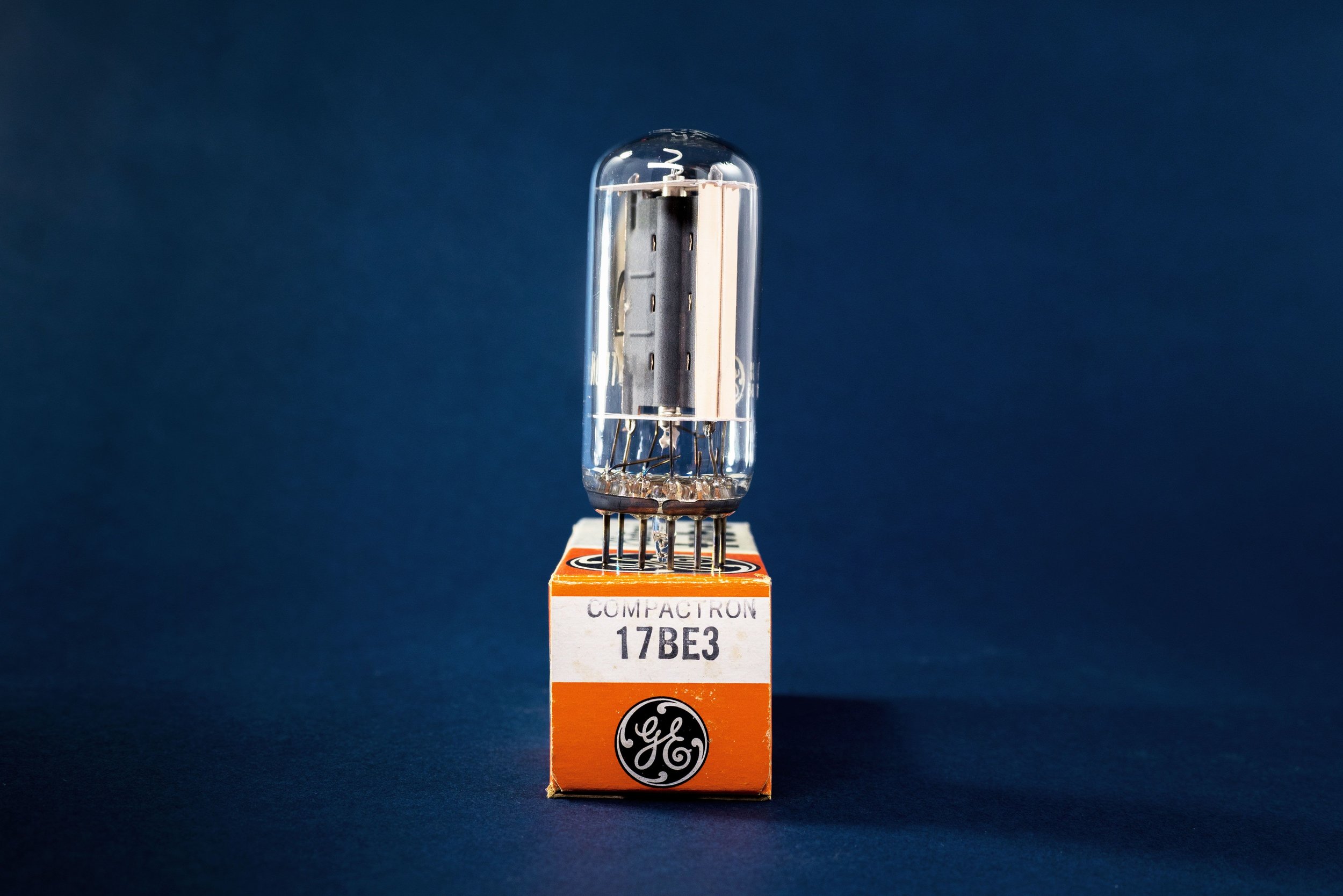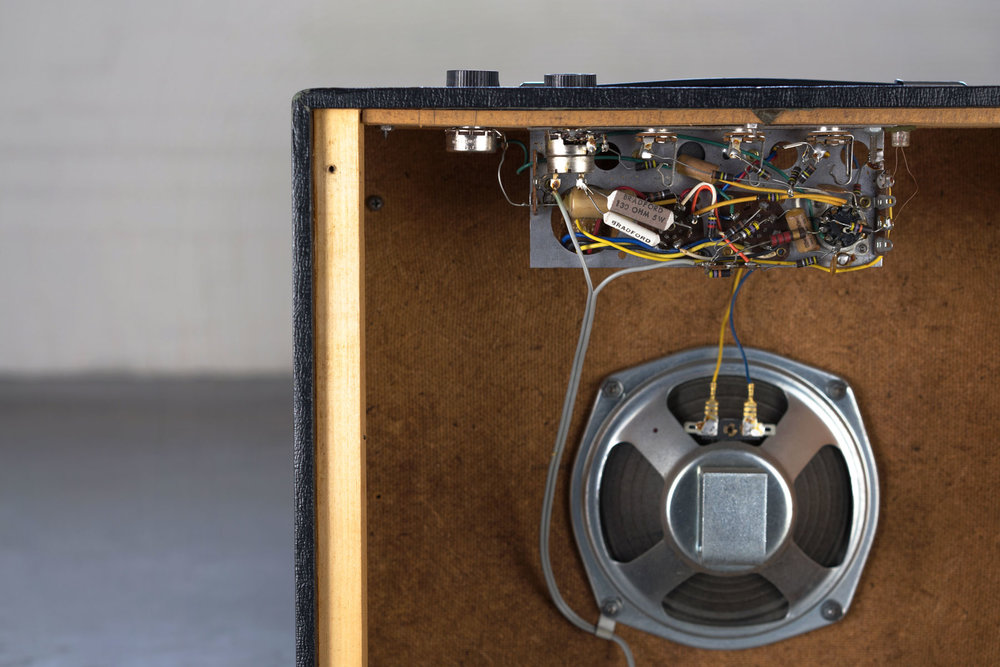Vintage Component Spotlight: Carbon Composition Resistors
Carbon composition resistors mounted across a switch in a Wurlitzer 206 amplifier from the 1960s.
Carbon composition resistors are those brown cylindrical resistors that you’ll see in most amps made before 1970. All resistors produce Johnson (thermal) noise, a byproduct of the fact that resistors dissipate heat. However, depending in their material composition and shape, resistors may produce other types of noise as well. Carbon composition resistors produce the most noise. But is this really a bad thing? Yes and no.
Before 1970 or so, all amplifiers used carbon composition resistors. Because these resistors are so noisy, and there are so many of them in the circuit, carbon resistors are an audible factor in a vintage amp’s tone. Some people like the subtle lo-fi warmth that carbon resistors offer. Other people prefer a cleaner sound, and use modern styles of resistors instead, such as low-noise metal film resistors.
There are a couple of ways to use carbon composition resistors. Occasionally, you’ll see them throughout an amp - even in new builds. This is the most period-correct usage. Vintage amp manufacturers did not use carbon resistors for tone: they used them because they were the only low-wattage resistors available. To emulate that, some builders will use carbon composition resistors exclusively.
In other cases, you’ll see carbon composition resistors only at critical points in the signal path, such as at the grid of the input triode. This inserts the carbon resistor into a place in the circuit where it will have the most impact, because its noise will be amplified by the gain stage. The rest of the circuit can be composed of modern resistors, which have the benefit of smaller size, closer tolerance, or better power-handling qualities.
Or, you may see the opposite: a circuit with modern resistors in sensitive locations, such as the early signal path, and carbon composition resistors elsewhere. This will make the circuit look more period-correct, and will also introduce a minor amount of resistor hum. But because low-noise resistors are mounted at the critical points, such as the tube grids where resistor noise is most likely to be amplified, the amp will sound cleaner. Sometimes, when we are repairing a vintage amp, we’ll swap out a couple of early signal path carbon composition resistors to achieve this.
The small resistors in this early-60s vintage Wurlitzer 140a amplifier are carbon composition. The larger ones at the top of the photo are wire wound, which are less noisy but better suited for high-power applications.
We primarily use low-noise metal film resistors in our new amp builds. Still, we appreciate the history and aesthetics of carbon composition. When restoring a vintage amplifier, we may replace certain carbon composition resistors with new metal film resistors, if we feel that it will benefit the circuit. However, if a carbon composition resistor tests well and the circuit isn’t noisy, we’ll usually leave them alone.
Other problems with carbon composition resistors. In addition to being noisy, carbon composition resistors are inaccurate and relatively unstable. Their tolerance is typically 20%, and their resistance can change based on environmental conditions. They’re also susceptible to moisture damage, which can cause their resistance to fluctuate further.
On the plus side, carbon composition resistors are very tolerant of large transient currents. They are more likely than film resistors to survive brief exposure to large currents - i.e., that they can dissipate large amounts of power in excess of their nominal rating - as long as the power surge doesn’t last for more than an instant. For this reason, they are sometimes used for applications where surges are expected. However, longer exposure to high currents and voltages will definitely cause the resistor to burn up.
Why are carbon composition resistors so noisy? A carbon composition resistor is made from carbon powder mixed into a binder, such as ceramic or clay. Carbon is a conductor, so the less carbon in the resistor, the greater its resistance.
All resistors emit some amount of noise when there is a current across them. This is known as Johnson or thermal noise. Carbon composition resistors are no different, but they additionally emit noise for other reasons on top of the basic Johnson noise. Because the carbon composition resistor is composed of tiny particles of carbon spread out across the binder material, it is very susceptible to contact noise. This is noise that arises from individual pieces of carbon coming into contact with each other as they become agitated by heat and current. The more continuous the carbon layer is, the less contact noise arises. For instance, carbon film resistors are made from a thin sheet of carbon that is molded over a central insulator, such as ceramic. For this reason, they exhibit less contact noise.
Further Reading
Browse all of our articles on restoring vintage gear. Or, click on an image below.






